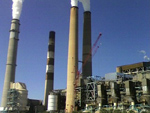Monica Prasad on the carbon tax

Yesterday’s New York Times ran an interesting op-ed piece by author and sociologist Monica Prasad on recent proposals to impose a tax on industrial emissions of carbon dioxide in an effort to combat global warming and other negative impacts of greenhouse gasses. In the article Prasad—author of the 2005 book The Politics of Free Markets: The Rise of Neoliberal Economic Policies in Britain, France, Germany, and the United States—uses her superior knowledge of European economic policy to demonstrate how one European country has made the carbon tax work. Prasad writes:
The very thought of new tax revenue has a way of changing the priorities of the most hard-headed politicians—even Genghis Khan learned to be peaceful, the story goes, when he saw how much more rewarding it was to tax peasants than to kill them. But if we want lower emissions, the goal of a carbon tax is to prompt producers to change their behavior, not to allow them to continue polluting while handing over cash to the government.
How do you get them to change? First, you prevent policy makers from turning the tax into a cash cow. Carbon tax discussions always seem to devolve into gleeful suggestions for ways to spend the revenue. Reduce the income tax? Give the money to low-income consumers? Use it to pay for health care? Everyone seems to forget that the amount of revenue is directly tied to the amount of pollution that is still going on.
Denmark avoids the temptation to maximize the tax revenue by giving the proceeds back to industry, earmarking much of it to subsidize environmental innovation. Danish firms are pushed away from carbon and pulled into environmental innovation, and the country’s economy isn’t put at a competitive disadvantage. So this is lesson No. 1 from Denmark.
Read the rest of the article online at the NYT website.